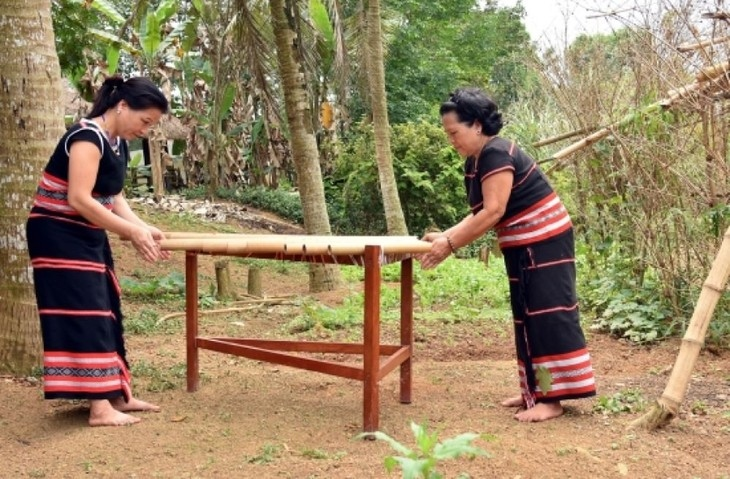The ethnic groups in Kon Tum province, especially the Xo Dang community, have a deep connection with the mountains and forests, which is reflected in their musical instruments, predominantly crafted from wood and bamboo.
The Xo Dang people of Kon Tum are known for their diverse range of musical instruments, including the enchanting T’rưng, K’lông Pút, water flute, drum, gong, horn, and percussion tube.
Of these, the T’rưng and K’lông Pút, crafted from bamboo, are the most beloved wind instruments.
“The Xo Dang people created these musical instruments while working in the fields. The K’lông Pút is typically played by a group of women, creating a harmonious melody. Meanwhile, the men often take the lead with the gongs,” shared Phan Van Hoang, Deputy Director of the Kon Tum provincial Department of Culture, Sports, and Tourism. “A traditional ensemble usually features a combination of T’rưng, K’lông Pút, gongs, and other instruments.”
The T’rưng is crafted from bamboo tubes, carefully tied together with strong, durable strings. Each tube is designed with an air and resonator part, contributing to its unique pitch and resonance. To fine-tune the sound, the maker meticulously sharpens the mouth of each tube.
The K’lông Pút, on the other hand, is made from a special type of bamboo called “nứa”. Players create a resonant sound by clapping their hands at the mouth of the tubes. Depending on the player’s style, a K’lông Pút can have anywhere from seven to ten tubes, tied together and placed on a stone slab or tree trunk during performance.
There is a deep cultural significance attached to the K’lông Pút. The bamboo tubes are believed to be connected to the soul of rice, and playing this instrument is thought to bring about a bountiful harvest. Additionally, the sound of the K’lông Pút helps to keep wild animals at bay.
Y Sinh, an Emeritus Artist from the Xo Dang group in Kon Tum province, shared, “In the past, the K’lông Pút was played during celebrations of good crops. For instance, when the rice grew well, people would gather at the Rong communal house and play the K’lông Pút and T’rưng to the rhythm of the gongs. Nowadays, we often play the T’rưng to entertain tourists, especially those from Japan, South Korea, and China.”
One of the most unique instruments of the Xo Dang people is their water musical instrument. It consists of bamboo tubes of varying lengths, hung vertically on the stream bank. As water flows into the tubes, it creates a mesmerizing melody, with the longer tubes producing lower sounds and the shorter tubes, higher ones.
Y Sinh, the Emeritus Artist, added, “Crafting the water musical instrument is a challenging task, and only a few elders possess this skill. When you walk near the stream, you’ll be captivated by the beautiful sounds and the sight of the water instrument.”
At community events, the ethnic groups of Kon Tum province always include a worship ritual, followed by a festive celebration filled with singing and dancing to the tunes of their traditional instruments.
“We organize art troupes to perform at Vietnam Cultural Heritage Day and other programs by the Ministry of Culture, Sports, and Tourism,” said Phan Van Hoang. “These events provide a platform for ethnic groups to showcase their cultural identities and pass on their traditional values to the younger generation through cultural exchanges.”
To preserve their cultural heritage, ethnic villages in Kon Tum province have formed art groups that perform at community events and teach young people how to play these traditional instruments.




